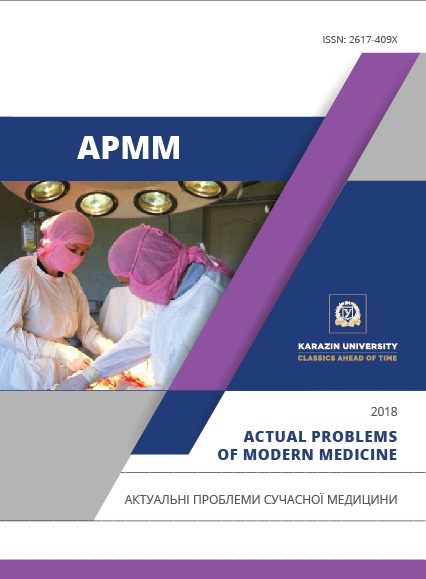CLINICAL EFFICIENCY OF LEEVOFLOXACIN IN COMPLEX TREATMENT OF PATIENTS WITH NON-HOSPITAL PNEUMONIA
Abstract
The results of the study, during which the effectiveness of levofloxacin in the treatment of patients with non-hospital pneumonia was assessed in the article. Levofloxacin, according to clinical studies, is indicated to patients for the treatment of respiratory tract infections (acute bronchitis, pneumonia, lung abscess, exacerbation of chronic lung diseases, etc.), infections of the kidneys and urinary system, uncomplicated infections of the skin and soft tissues, infections of bone tissue and joints, infectious diseases of the gastrointestinal tract, etc. The advantage of levofloxacin and other new fluoroquinolones is their improved activity against S. pneumoniae and high efficacy against most causative agents of infectious diseases of the lower respiratory tract. The action of this drug is associated with a wide distribution in the tissues and the creation of high concentrations in biological media that exceed plasma concentrations. Levofloxacin is characterized by minimal metabolism, good penetration and the creation of high concentrations in lung tissue, sputum, bronchial secretions, alveolar macrophages, which is very important in the treatment of patients with respiratory infections. All this was the basis for the use of levofloxacin as an etiotropic drug for the treatment of patients with non-hospital pneumonia (NP). In the work it was shown that levofloxacin (Abifloks) is a highly effective antibacterial drug for the treatment of NP with varying degrees of severity. Positive dynamics of the clinical manifestations of the disease was noted already on the 3rd day after the start of therapy. In addition, Abifloks has good therapeutic tolerance in patients with non-hospital pneumonia. The identified side effects were short-lived and did not require additional drug correction and discontinuation of the drug. The optimally chosen dosing regimen (500 mg intravenously once) allows maximum adherence to the intake regimen and maintaining the necessary concentration in the inflammatory focus, which affects the clinical and bacteriological effectiveness of the therapy.
Downloads
References
Zil'ber E. K. Neotlozhnaya pul'monologiya (2009) M.: GEOTAR-Media. 264 p. (In Russia)
Leschenko S.I., Levofloxacin in pulmonology practice // Ukrainian pulmonology journal. 2009. №4. P. 54-57 (In Ukrain)
The protocol of care for patients with community acquired and nosocomial (hospital) pneumonia in adults: etiology, pathogenesis, classification, diagnosis, antibiotic therapy // MН Ukraine №128 from 19.03. 2007] (In Ukrain)
Feschenko Y.I., Golubovska O.A. etc. Community acquired pneumonia in adults: etiology, pathogenesis, classification, diagnosis, antibiotic therapy (draft clinical guidelines) Part II // Ukrainian pulmonological magazine. 2013, №1, P. 5-21 (In Ukrain)
Anderson V. R., Levofloxacin: a review of its use as a highhdose, shorttcourse treatment for bacterrial infection // Drugs. 2008. N 4.Vol 68. P.535-565.
Kozlov S. N. (2009) Sovremennaya antimikrobnaya khimioterapiya: Rukovodstvo dlya vrachey M.: MIA, 448 p.
Sahm D.F. Antimicrobial resistance trends among sinus isolates of Streptococcus pneumoniae in the United States // Otolaryngol. Head Neck Surg. 2007. N3. P. 385-389.
Sinopalnikov A.I., Zaitsev A.A .The place of "respiratory" fluoroquinolones in the treatment of community-acquired pneumonia in adults // Consilium medicum. 2012. 12, №3.С. 68-75.




